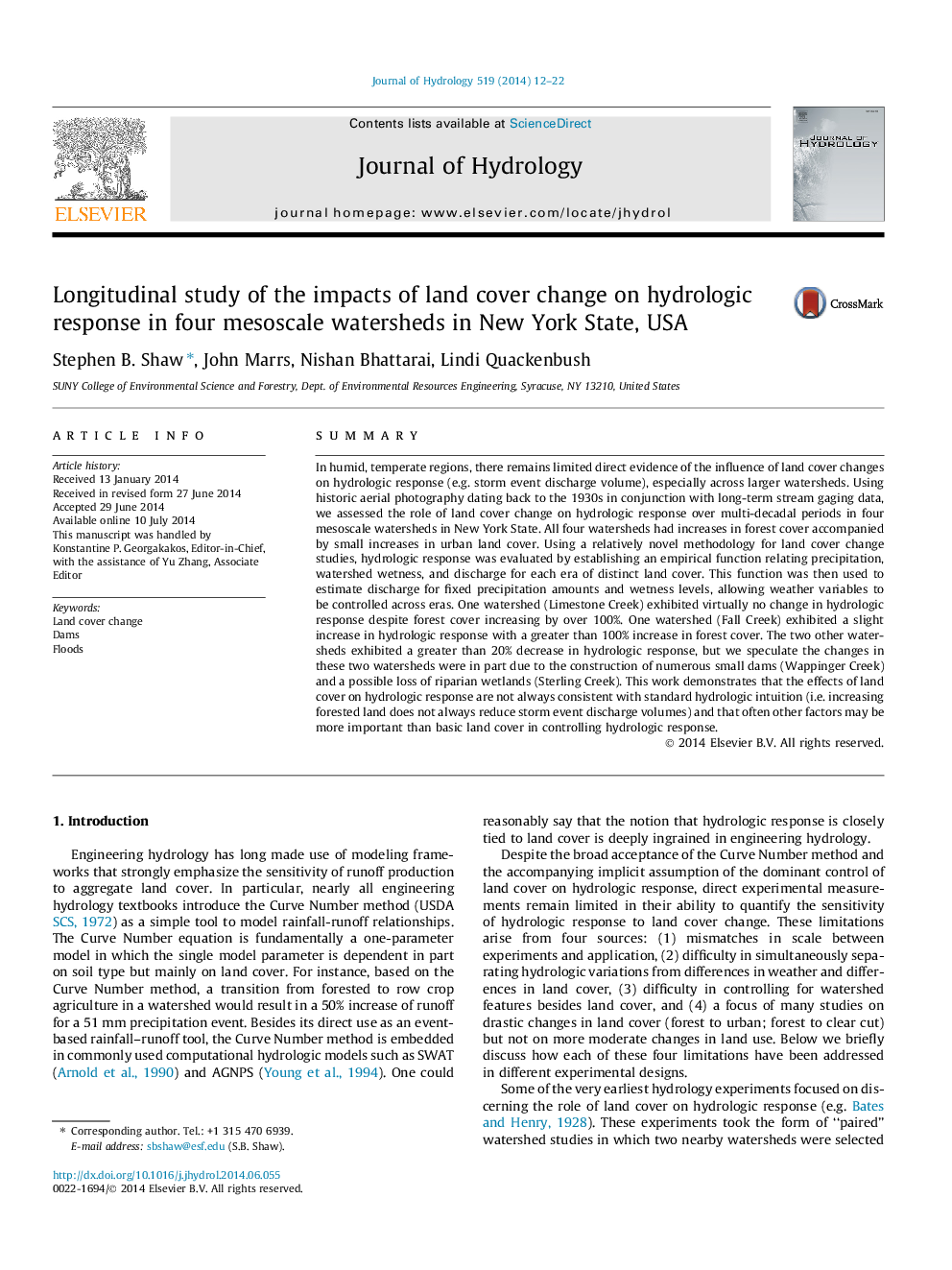| Article ID | Journal | Published Year | Pages | File Type |
|---|---|---|---|---|
| 6412335 | Journal of Hydrology | 2014 | 11 Pages |
â¢Land cover determined for four watersheds from historic aerial photography dating to 1930s.â¢All watersheds exhibit transition from agricultural to forest land cover.â¢Historical flows normalized by precipitation and antecedent moisture.â¢Normalized large runoff volumes do not consistently decrease with forestation.
SummaryIn humid, temperate regions, there remains limited direct evidence of the influence of land cover changes on hydrologic response (e.g. storm event discharge volume), especially across larger watersheds. Using historic aerial photography dating back to the 1930s in conjunction with long-term stream gaging data, we assessed the role of land cover change on hydrologic response over multi-decadal periods in four mesoscale watersheds in New York State. All four watersheds had increases in forest cover accompanied by small increases in urban land cover. Using a relatively novel methodology for land cover change studies, hydrologic response was evaluated by establishing an empirical function relating precipitation, watershed wetness, and discharge for each era of distinct land cover. This function was then used to estimate discharge for fixed precipitation amounts and wetness levels, allowing weather variables to be controlled across eras. One watershed (Limestone Creek) exhibited virtually no change in hydrologic response despite forest cover increasing by over 100%. One watershed (Fall Creek) exhibited a slight increase in hydrologic response with a greater than 100% increase in forest cover. The two other watersheds exhibited a greater than 20% decrease in hydrologic response, but we speculate the changes in these two watersheds were in part due to the construction of numerous small dams (Wappinger Creek) and a possible loss of riparian wetlands (Sterling Creek). This work demonstrates that the effects of land cover on hydrologic response are not always consistent with standard hydrologic intuition (i.e. increasing forested land does not always reduce storm event discharge volumes) and that often other factors may be more important than basic land cover in controlling hydrologic response.
